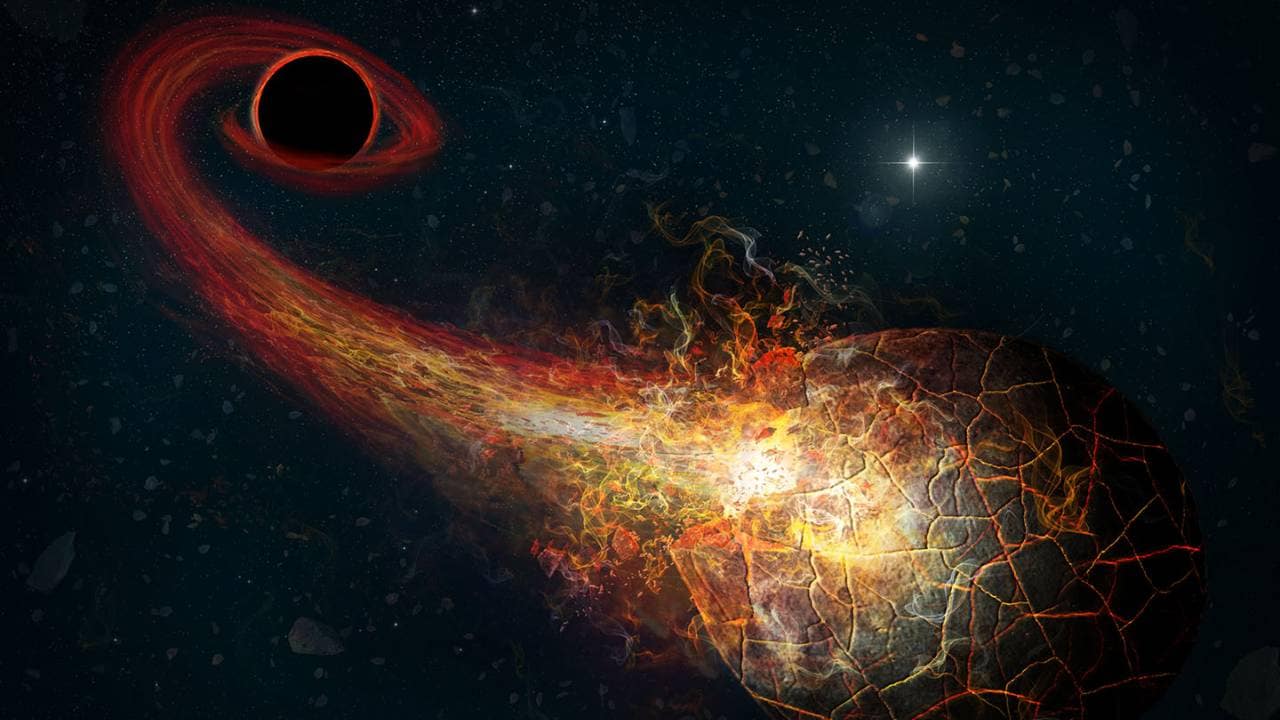
Black hole, the size of a grapefruit could be Planet X, is lurking in the outer edges of the solar system
FP TrendingJul 14, 2020 10:00:57 ISTScientists are now trying to figure out if a grapefruit-sized blackhole actually lurks in the outer solar system.In the last few years, researchers have noticed an odd clustering of multiple trans-Neptunian objects (TNOs), which are found in the far outer solar system.According to report by Space.com, some scientists believe that the TNOs' paths have been sculpted by the gravitational pull of a big object which is five to 10 times bigger than the Earth.While the object could be Planet Nine or Planet X, there are theories that it could, in fact, be a black hole that packs in all its mass into a sphere which is roughly the size of a grapefruit.Artist's conception of accretion flares resulting from the encounter of an Oort-cloud comet and a hypothesized black hole in the outer solar system..Image Credit: M. Weiss/harvardThe study has been conducted by Dr Avi Loeb, a Professor of Science at Harvard, and Amir Siraj, a Harvard undergraduate student. The paper has been published by The Astrophysical Journal Letters.According to a report in Universe Today, study authors have suggested that a primordial black hole could be lurking in the region. Unlike stellar black holes and supermassive black holes, primordial black holes are much smaller and formed after the Big Bang due to density fluctuations."In the vicinity of a black hole, small bodies that approach it will melt as a result of heating from the background accretion of gas from the interstellar medium onto the black hole," said Siraj said in a statement. "Once they melt, the small bodies are subject to tidal disruption by the black hole, followed by accretion from the tidally disrupted body onto the black hole." Loeb added, "Because black holes are intrinsically dark, the radiation that matter emits on its way to the mouth of the black hole is our only way to illuminate this dark environment."Loeb added, Because black holes are intrinsically dark, the radiation that matter emits on its way to the mouth of the black hole is our only way to illuminate this dark environment.They have found a new way to search for black holes in the outer solar system - by studying the flares that result from the comets that are captured by the black hole.According to the researchers, data from the upcoming telescope Legacy Survey of Space and Time (LSST) should be able to confirm or rule out the Planet-Nine-is-a-black-hole hypothesis within a year of the survey's commencement. The LSST is expected to have the sensitivity required to detect accretion flares, while current technology isnt able to do so without guidance."LSST has a wide field of view, covering the entire sky again and again, and searching for transient flares," said Loeb.Siraj added "Other telescopes are good at pointing at a known target but we do not know exactly where to look for Planet Nine. We only know the broad region in which it may reside. LSST's ability to survey the sky twice per week is extremely valuable. In addition, its unprecedented depth will allow for the detection of flares resulting from relatively small impactors, which are more frequent than large ones."Find latest and upcoming tech gadgets online on Tech2 Gadgets. Get technology news, gadgets reviews & ratings. Popular gadgets including laptop, tablet and mobile specifications, features, prices, comparison.
……Read full article on Firstpost
Technology Science
Comments
Leave a comment in Nestia App